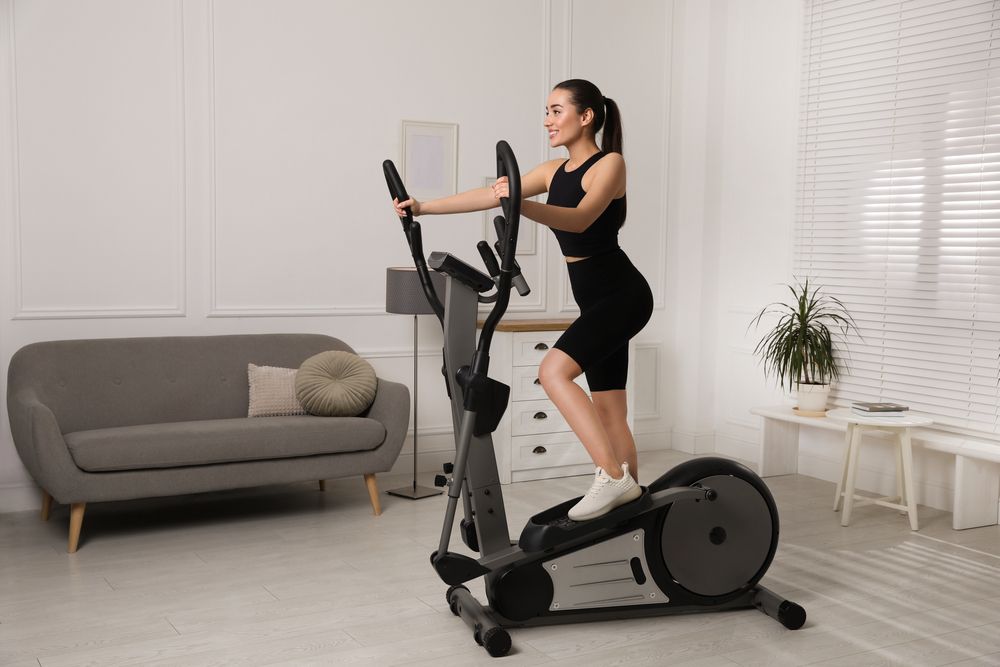When aiming to shed pounds and reach fitness milestones, selecting the appropriate exercise equipment plays a crucial role. Among the favored options are stationary bikes and elliptical trainers, renowned for their gentle yet impactful cardiovascular advantages. However, when prioritizing weight loss, which apparatus holds the upper hand? This article delves into the merits of each, dissecting their effectiveness in trimming down.
In the discourse of stationary bike versus elliptical for weight loss, both apparatuses offer potent workouts conducive to achieving fitness objectives. Ultimately, the decision hinges on individual inclinations, fitness proficiency, and particular factors like joint wellness or spatial constraints.
If you favor comprehensive workouts and aim to maximize calorie expenditure, opting for the elliptical might be ideal. Conversely, if you lean towards a simpler, lower-body-centric exercise with enhanced accessibility, the stationary bike could suit you better. Whichever you choose, integrating either machine into your fitness regimen can aid in weight loss, enhance cardiovascular well-being, and boost overall fitness levels.
1) Both the stationary bike and elliptical are superb at torching calories.

Both the stationary bike and elliptical provide efficient calorie-burning exercises. The amount of calories burned hinges on factors like intensity, duration, and individual traits. Nonetheless, studies indicate that the elliptical might have a slight advantage in calorie burn owing to its engagement of multiple muscle groups. While stationary bike pedaling mainly focuses on the lower body, elliptical workouts involve arm movements, activating more muscles and potentially leading to increased calorie expenditure.
2) They're low-impact

The stationary bike and elliptical both excel in their low-impact design, making them particularly suitable for individuals with joint concerns or those recuperating from injuries. However, the elliptical may provide slightly superior joint protection owing to its seamless, fluid movement. On the other hand, while the stationary bike remains gentle on the joints, its repetitive pedaling actions might pose discomfort for individuals with knee or hip issues.
3) They activate different muscle groups.

Though both machines offer stellar cardiovascular exercises, they focus on distinct muscle groups. The stationary bike predominantly targets the lower body, activating muscles like the quadriceps, hamstrings, calves, and glutes. Conversely, the elliptical involves both upper and lower body, integrating arm, chest, back, and shoulder movements alongside lower-body muscle engagement. This holistic involvement not only boosts calorie expenditure but also fosters comprehensive muscle tone and strength.
4) They provide a variety of workouts.

Both the stationary bike and elliptical provide an array of workout choices to infuse excitement and challenge into your exercise regimen. Numerous machines feature pre-programmed workouts spanning various intensities, durations, and resistance levels. Furthermore, both machines enable you to tailor your workout to your fitness level and objectives by adjusting resistance or incline. Certain ellipticals even offer the option to pedal in reverse, diversifying your routine and targeting different muscle groups.
5) They're accessible and convenient.

Regarding accessibility and convenience, the stationary bike holds a slight edge. Its compact size and ease of accommodation make it an ideal choice for home gyms or apartments with limited space.
Moreover, stationary bikes tend to be more budget-friendly compared to elliptical trainers, making them a practical option for those seeking home exercise equipment without breaking the bank. Nevertheless, numerous gyms and fitness centers offer both stationary bikes and ellipticals, catering to a diverse range of user preferences and requirements.

